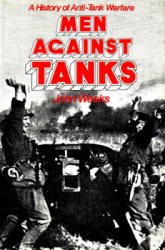Facing these forces along the 100-mile long Alsace bridgehead, the German 19th Army deployed its LXIV and LXIII Corps north and south under the command, respectively, of General Thumm and Lieutenant-General Abraham. The two corps had seven infantry or mountain divisions and the 106th "Feldherrnhalle” Panzer Brigade. But these forces were threadbare. Including the reinforcements attached to them, the best-equipped (the 198th Division: Colonel Barde) had
Exactly 6,891 men in the line, and the 716th Volksgrenadier Division (Colonel Hafner) had only 4,546. Furthermore, although de Lattre complained about not receiving all the supplies he thought
The American Martin B-26G Marauder medium bomber


Engines: two Pratt & Whitney R-2800-43 Twin Wasp radials,
1,920-hp each.
Armament: eleven.5-inch machine guns and up to 4,000 lbs of bombs. Speed : 283 mph at 5,000 feet. Ceiling : 19,800 feet.
Range : 1,100 miles.
Weight empty/loaded : 25,300/38,200 lbs.
Span : 71 feet.
Length : 56 feet 1 inch.
Height: 20 feet 4 inches.
Crew: 7.
/

> An M3 half-track of the French 1st Army moves into Colmar on February 2, 1945. >> A mine explodes in the path of an MW tank destroyer of a French armoured division, fully equipped with the latest U. S. equipment.


A "Our armies are marching with all despatch to the East and to the West...” "Is that really true?” "Yes, mein Fiihrer, the ones on the Western Front to the East, and the ones on the Eastern Front to the West!”
He needed, by the eighth day of battle General Rasp was reduced to ordering strict economy to his gunners: 12 15-cm and 15 10.5-cm shells per day per gun, compared with 90 155-mm and 120 105-mm shells in the French 1st Army.
Three circumstances, however, compensated a little for the numerical and materiel inferiority of the defenders:
1. the terrain, which was no more than "a network of streams and rivers” according to de Lattre. Within it are many woods and even more villages, among which should be mentioned the manufacturing and industrial towns of the Mulhouse region;
2. the weather. On the first day, I Corps attacked LXIII Corps in the face of a snowstorm blowing from the northeast. At night, the temperature fell to 20 and even 25 degrees Centigrade below zero. Finally, just when German resistance was softening, an unexpected rise in the temperature swelled the rivers and made the roads into sloughs of mud; and
3. though far less numerous, the Panther tanks and "Jagdpanther” and "Nashorn” tank destroyers, with their very high velocity 8.8-cm guns, were far superior to the French 1st Army’s Sherman tanks and MlO tank destroyers. This superiority was emphasised by the German vehicles’ wide tracks, which allowed them to manoeuvre on the snow in weather conditions with which their opponents
Were not able to cope.
At 0700 hours on January 20, H-hour sounded for the reinforced I Corps. Its task was to break the enemy line between Thann and the Forest of Niinenbruck, to capture Cernay, and then to push on without stopping towards Ensisheim and Reguisheim on the 111. For this purpose, over a 14-mile front, Bethouart had the 9th Colonial Division (General Morliere) around Mulhouse, the 2nd Moroccan Division (General Carpentier) in the centre, and the 4th Moroccan Mountain Division (General de Hesdin) around Thann. In spite of the support of the tanks of the 1st Armoured Division (General Sudre), the attempt to break the enemy lines towards Cernay was not very successful, both because of the tough resistance met, aided by well-sited minefields, and because of the snowstorms which made artillery observation impossible.
On the other hand, the secondary attack, which had been entrusted to the 9th Colonial Division, took the villages of Burtzwiller, Illzach, Kingersheim, Pfastadt, and Lutterbach, a remarkable success due to the dash with which General Salan had led the infantry of this division.
On the following day, LXIII Corps counter-attacked and, on January 22, with the storm blowing worse than ever. General Bethouart expressed the opinion that they should wait for it to blow itself out. But any let-up on the part of I Corps would have prejudiced the attack of II
Corps, which was just finishing its preparations. So Bethouart was ordered to press on with his attack, and a fierce, bitter struggle was waged close to Wittel-sheim, in the Forest of Niinenbruck, and for the factory towns with their potassium deposits. These towns had to be cleared one by one.




 World History
World History









